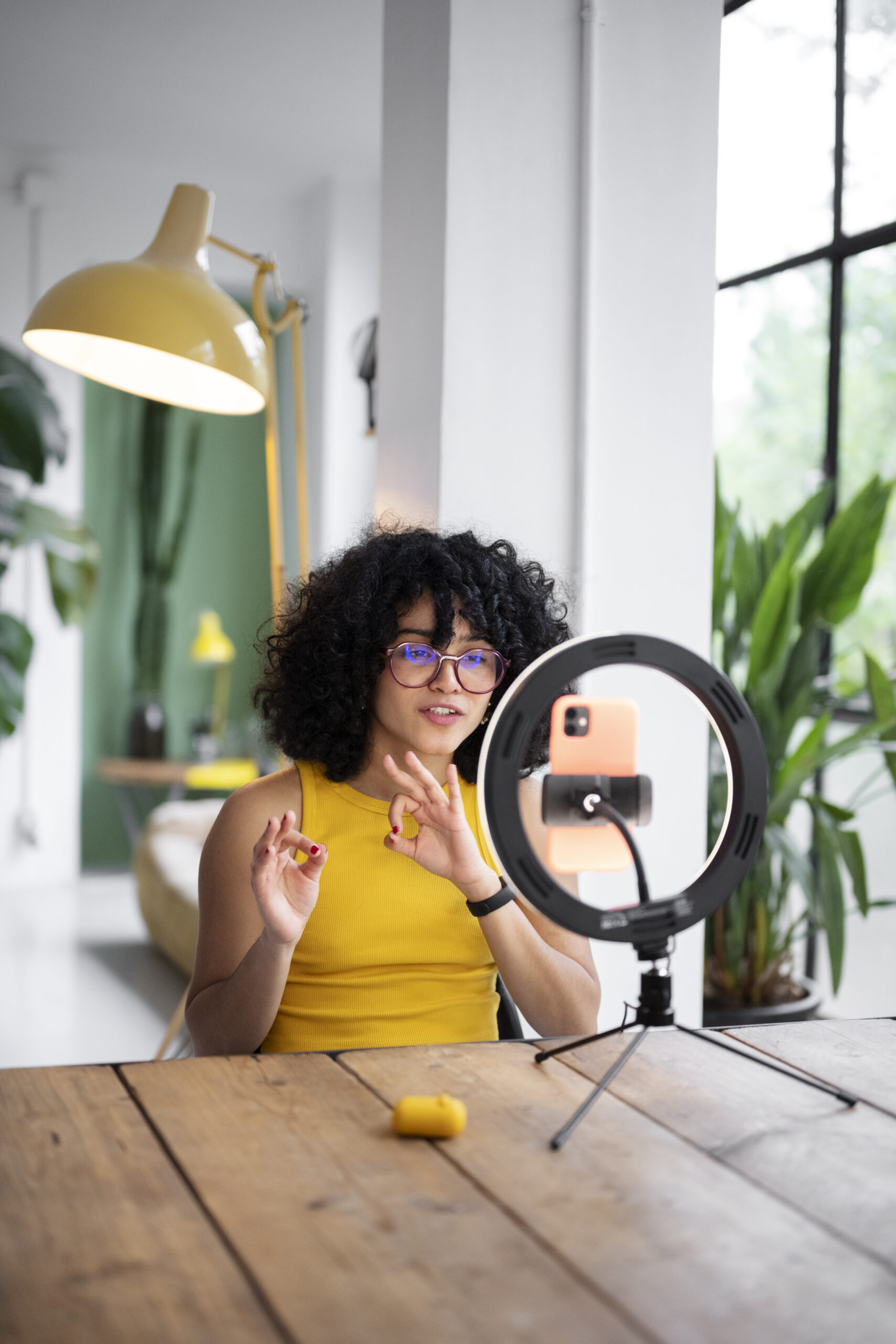Influencer marketing has rapidly evolved over the last few years, becoming a cornerstone strategy for brands aiming to reach targeted audiences authentically. With social media consumption at an all-time high, choosing the best platforms for influencer marketing is crucial to campaign success. Whether you’re a small business or a global brand, understanding the strengths and limitations of each platform can help you make informed decisions.
In this blog, we’ll explore Instagram, TikTok, and YouTube—three of the most powerful platforms in the influencer space—and examine which ones serve different business goals, content formats, and audiences best.
Read More: Influencer Marketing for Brands: Building Trust Through Real Voices
Why Platform Choice Matters in Influencer Marketing
The best platforms for influencer marketing aren’t universal—they depend on your industry, target demographic, campaign goals, and content type. Each platform fosters different user behaviours:
-
Instagram is highly visual, curated, and perfect for lifestyle content.
-
TikTok is fast-paced, trend-driven, and thrives on raw, engaging short-form videos.
-
YouTube is ideal for long-form storytelling, product reviews, and educational content.
Therefore, selecting the right platform requires a strategic balance of where your audience lives and how they consume content.
Instagram: Visual Influence with Authentic Stories
Instagram continues to be a dominant player and is often seen as one of the best platforms for influencer marketing—especially for lifestyle, fashion, beauty, and wellness brands.
📸 Strengths of Instagram
-
Versatile Content Formats
Instagram offers a blend of Stories, Reels, static posts, and carousels. This variety allows influencers to present content in diverse ways—offering more engagement opportunities for brands. -
High Engagement Rates
Instagram’s visual appeal combined with a sense of community often leads to strong engagement. Micro-influencers (with 10k–100k followers) on Instagram can outperform mega-influencers in terms of interaction rates. -
Shoppable Features
Instagram Shopping and product tagging allow seamless conversion from content to purchase—streamlining the customer journey.
⚠️ Weaknesses
-
Algorithm changes can reduce organic reach.
-
Oversaturation of sponsored content can lead to audience fatigue.
-
Less effective for long-form storytelling or in-depth reviews.
When to Use Instagram
Choose Instagram if your goal is brand awareness, aesthetic storytelling, or if your product is highly visual. For fashion, food, beauty, or home decor, Instagram remains one of the best platforms for influencer marketing in 2025.
TikTok: Viral Growth Through Short-Form Content
TikTok has exploded onto the influencer marketing scene, especially among Gen Z and younger millennials. It has become one of the fastest-growing social media platforms and is considered by many to be one of the best platforms for influencer marketing for brands that want viral exposure.
🎥 Strengths of TikTok
-
High Virality Potential
TikTok’s unique “For You Page” (FYP) algorithm enables content to go viral—even from accounts with few followers. This levels the playing field for newer influencers and smaller brands. -
Trend-Driven Creativity
TikTok thrives on trends, challenges, sounds, and memes. Brands that collaborate with influencers to capitalise on these trends often see higher engagement and reach. -
Authenticity Over Perfection
Raw, unfiltered, and behind-the-scenes content performs best on TikTok. It creates trust and relatability, which are key components of successful influencer campaigns.
⚠️ Weaknesses
-
Rapid trend changes can make content irrelevant quickly.
-
Metrics can be harder to track and compare.
-
Not ideal for in-depth product reviews or tutorials.
When to Use TikTok
If you’re targeting Gen Z or looking for high reach and virality, TikTok could be the best choice. Brands in fashion, music, entertainment, and food have found TikTok to be among the best platforms for influencer marketing for spontaneous and playful brand expression.
YouTube: Authority Through Long-Form Video
While TikTok and Instagram cater to shorter attention spans, YouTube holds strong as the go-to platform for in-depth content. It remains one of the best platforms for influencer marketing when it comes to education, tech, fitness, finance, and beauty tutorials.
🎬 Strengths of YouTube
-
Long-Form Content
YouTube supports videos ranging from a few minutes to over an hour, making it ideal for detailed product reviews, unboxings, tutorials, and vlogs. -
Strong Search Capabilities
YouTube functions as a visual search engine (second only to Google). Well-optimised videos can continue to generate views, leads, and conversions for months or even years. -
High Trust Factor
YouTubers often form deep relationships with their audiences, leading to higher trust and influence—especially for purchase decisions.
⚠️ Weaknesses
-
Production takes more time and resources.
-
Slower follower and engagement growth compared to TikTok.
-
Higher collaboration costs with top-tier influencers.
When to Use YouTube
YouTube is the right choice when your product or service requires explanation, demonstration, or thoughtful storytelling. In such cases, it remains one of the best platforms for influencer marketing—particularly for tech, education, and B2B sectors.
Comparing the Platforms: Which One is Best for You?
| Platform | Best For | Content Type | Target Audience | Lifespan of Content |
|---|---|---|---|---|
| Brand storytelling, aesthetic visuals | Reels, Stories, Posts | Millennials, Gen Z | Short to Medium | |
| TikTok | Viral content, trend-jumping | Short-form video | Gen Z, Young Millennials | Very Short |
| YouTube | Tutorials, reviews, thought leadership | Long-form video | Millennials, Gen X | Long |
When selecting the best platforms for influencer marketing, consider these factors:
-
Audience demographics
-
Your campaign goal (awareness, traffic, conversions)
-
Your product complexity
-
Content longevity
-
Budget and timeline
Integrating Multiple Platforms: A Hybrid Approach
Increasingly, brands are finding success by using a cross-platform strategy. For instance, an influencer could create an in-depth YouTube tutorial, followed by teaser clips on TikTok and Instagram Reels to drive traffic. This maximises exposure while catering to varied user behaviours.
By combining efforts across the best platforms for influencer marketing, brands can create cohesive storytelling experiences that reach customers at multiple touchpoints.
Read More: Influencer Marketing Trends: Short-Form Video & Live Shopping
Final Thoughts
Instagram, TikTok, and YouTube each offer unique opportunities—and choosing the best platforms for influencer marketing in 2025 depends on your campaign goals and target audience. Rather than sticking to just one, the smartest approach is often to leverage their individual strengths as part of a well-rounded strategy.
Stay adaptable, analyse performance, and most importantly—collaborate with influencers whose values align with your brand. The right platform, paired with the right influencer, can deliver exponential value and drive meaningful connections with your audience.
Get Personal Branding with complete interview assistance for UK jobs: www.brandme4job.com
Get your CV checked and improve it with section based detailed recommendation, for free: Brand Me 4 Job Free CV Check!
Join www.stunited.org to build a wide network in the United Kingdom.
Contact us to get Career Assistance in the UK: Call Us Now!
To get regular job, career, and industry updates along with important UK jobs-related information, follow us on: Instagram, LinkedIn & Facebook





